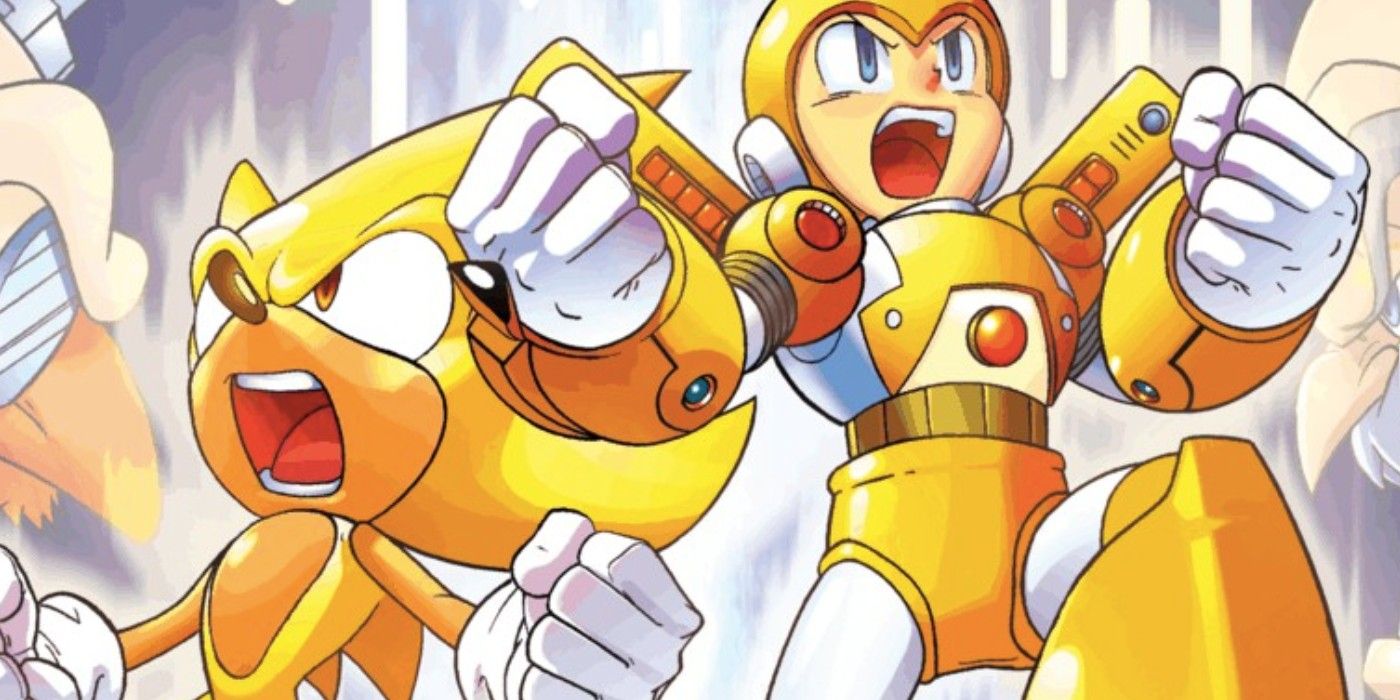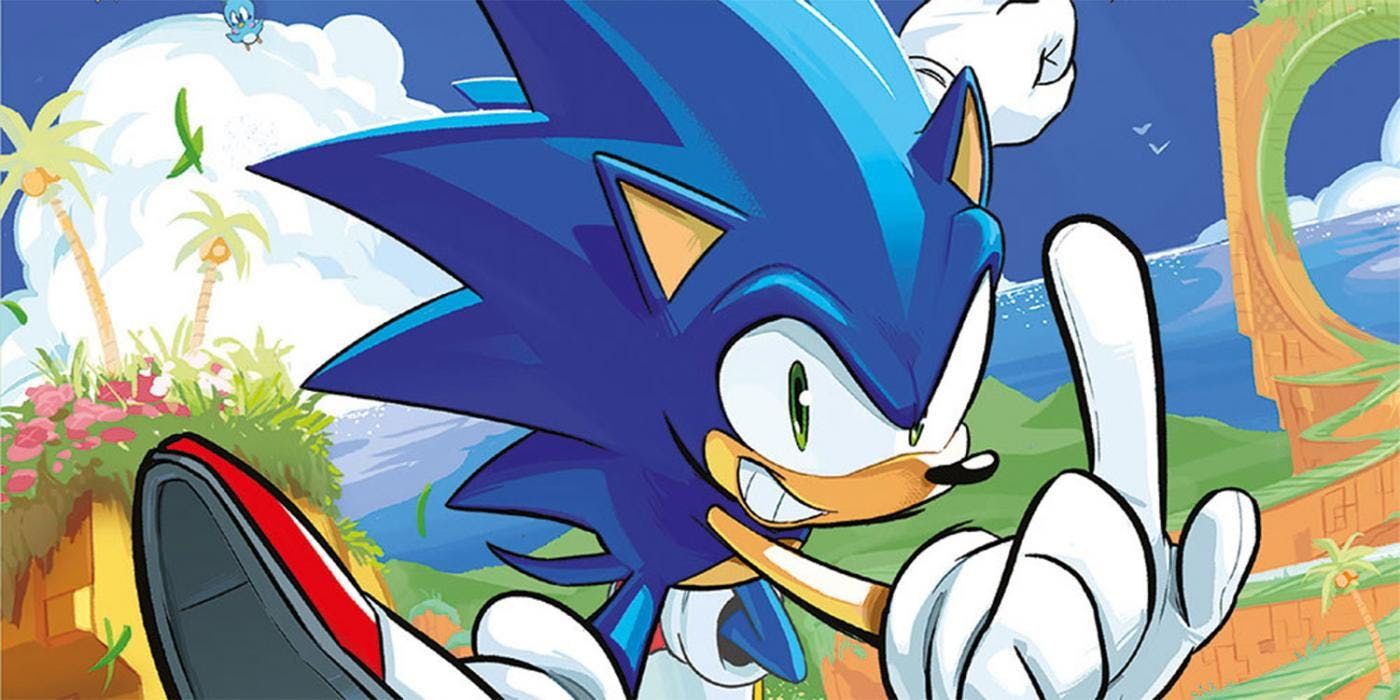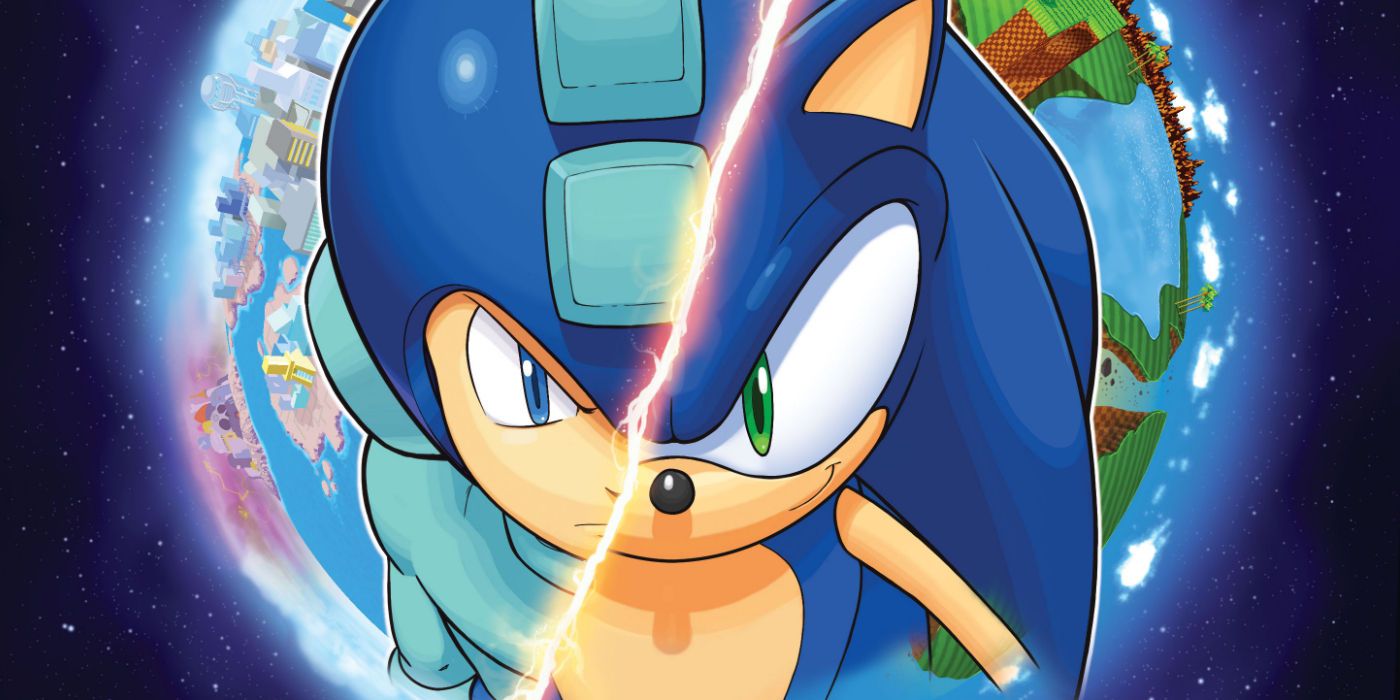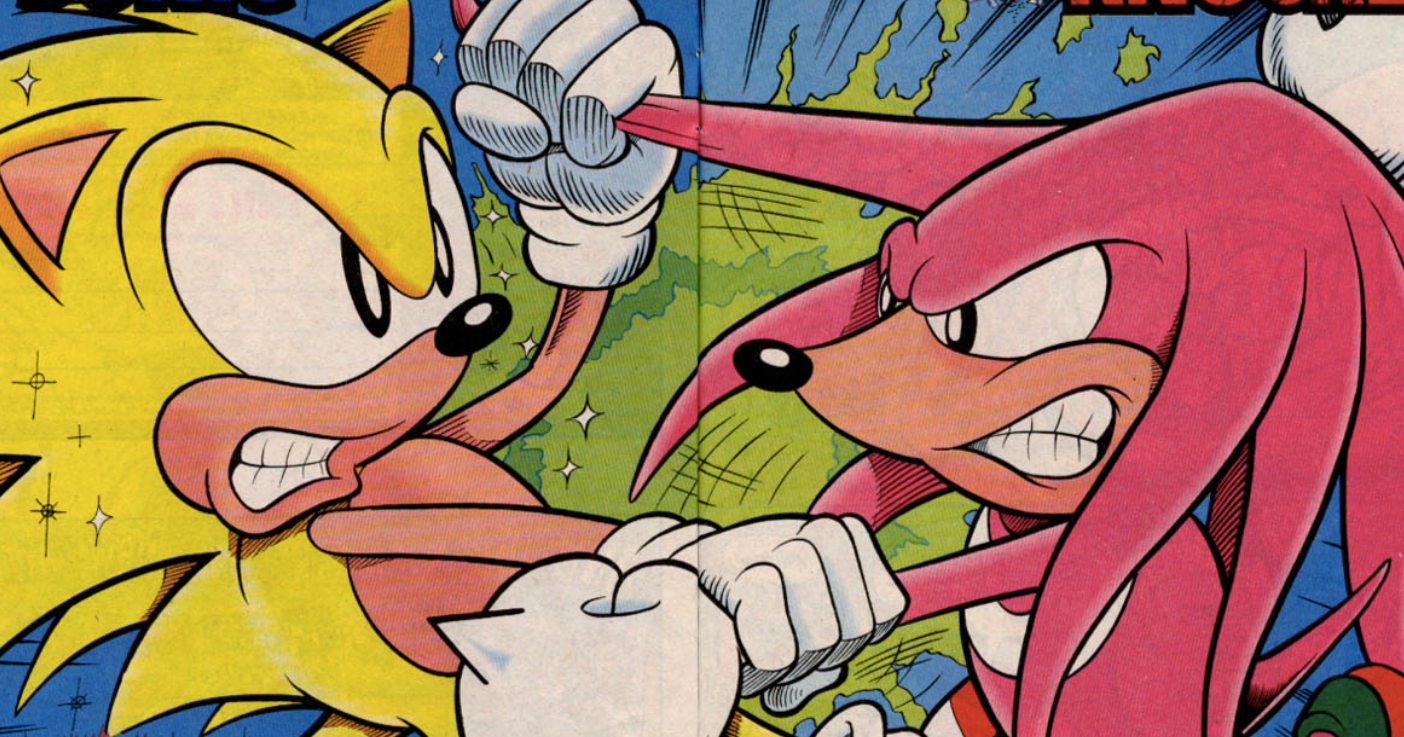The day Archie Comics discontinued the Sonic The Hedgehog comic book series was just as heartbreaking as when ABC canceled the Saturday Morning cartoon show of the same name. That’s because the TV show was the main inspiration for the aforementioned comic book series - at least, from issue #39 onwards. Beginning with the Mecha Madness story arc, the comic broke away from the short, individual story format that spewed out more kid-friendly content to adopt longer arcs featuring much darker themes that the TV show also explored.
Archie’s series (also referred to as the official canon) followed the Freedom Fighters, a valiant group of heroes who lived in a tree-filled valley and ventured out to fight against the evil Dr. Ivo Robotnik (who would later become Dr. Eggman). Upon that comic's cancellation, IDW Publishing swooped in and immediately created a whole new continuity focusing more so on the video game franchise. The Freedom Fighters became the urban-based Resistance, moved into the city and fought exclusively against Dr. Eggman. But so much more changed with the shift from Archie to IDW than just the designation of the anthropomorphic animals' movement against their respective evil, mad scientists.
Ancient Magic and Nature vs. Technology and Industry
IDW’s continuity takes place on a nameless planet referred to merely as Sonic’s World (or even more simply, The World). The fact that Archie’s canon is set on a pre-human Earth with both an actual name (Mobius) and a date (albeit a confusing one) is an accurate representation of how both universes differ. And in this case, a more in-depth storyline is indicative of better storytelling in every way. While the only history in IDW Publishing’s retelling spans a little before the so-called Eggman War in the not so distant past, the history in Archie’s universe goes back thousands of years. Additionally, there are vestiges of that ancient, magical realm in the official canon's present-day where fantasy exists cohesively in the science-fiction-like setting, creating a much more layered and complex world.
For example, an ancient society of sorcerers called the Order of Ixis that originally existed about 9,700 years ago now manifest in the present day after reawakening (read: taking over) in the body and mind of Inxis’ descendant. These sorcerers are so ancient that they battled in a war so old it’s referred to as the Forgotten War. (Okay, that’s not really why it’s known as the Forgotten War, but it works for the purpose of this article.) Another such group features a name that literally contains the world “Ancient.” Called the Ancient Walkers, these tiki mask-wearing demigods sometimes appear in the land of the living during various crises on Mobius. No such extensive histories or overlaps exist in the IDW series.
On top of the presence of magic and technology, the official canon features yet another compelling dichotomy, this one being between nature and industry. When Dr. Ivo Robotnik first comes to power through treachery and deceit (always a great combo), the Mobians are forced to flee into the Wood Zone where the Freedom Fighters make their base of operations in a place called Knothole Village (much like Robin Hood’s merry men). Meanwhile, Robotnik takes over the Mobian’s multicultural city known as Mobotropolis and transforms it into "Robotropolis.” Pollution and darkness soon follows the city’s rechristening, making Robotropolis devoid of all-natural life. While the Mobians originally lived in modern society, their settlement in the wild creates a stunning contrast between both Sonic’s and Robotnik’s base of operations. There is no such contrast in IDW’s universe.
Loss of A Royal Faun, “Mega Man” Bunny, and the Actual Mega-Man
Probably the most stunning change is the absence of many central figures in IDW’s continuity, especially Princess Sally, and with her, the entirety of the Kingdom of Acorn. While the pomp and frills that come with the royal lineage of Acorn is greatly missed in the IDW series, the loss of Princess Sally is much more acute. For one, having strong female characters in any comic is always welcome, especially if the comic is Sonic and the female is not another powerful hedgehog (Sally is a faun). The royal princess also brings out the best in Sonic, mostly through their infuriatingly ambiguous relationship that’s such a tantalizing tease at times that it’s impossible not for readers to become fully invested in the hope they will one day hook up officially. (It’s also refreshing to see Sonic actually fall for a girl rather than being totally indifferent and, worse, a total jackass, as he proves himself to be on a perpetual basis with Amy Rose in both continuities.) Speaking of relationships, the royal faun shares a unique friendship with a form of artificial intelligence named Nicole, a companionship that transcends many of the relationships Sally has with actual living beings (these types of interactions are always rife with complications, too). Plus, Sally usually communicates with Nicole via a compact supercomputer that looks an awful lot like a tricorder from Star Trek (and that’s a good thing; the more Star Trek, the better).
IDW’s continuity also takes away Bunnie Rabbot, and with her, an “injury” that both shapes her character in a profound way and acts as a constant reminder of a weaponized procedure that doesn’t exist in IDW’s universe. In the official canon, Robotnik weaponizes a technology so it can transform any life form into an obedient machine through a frightening procedure called Roboticization. While Bunnie underwent Roboticization in the early days and was rescued, the injuries she sustains later requires the replacement of her affected limbs with cybernetic parts. Bunnie might gain incredible powers as a cyborg-like entity, but she struggles with her altered state throughout the series. Her journey towards acceptance and, later, a complete embrace of her new identity is humbling, not to mention nonexistent in IDW. It’s important to note that IDW does have its own version of Roboticization through the introduction of a disease called the Metal Virus that transforms living matter into a metallic compound, but the phenomenon only lasts a short time before Sonic shoots it into the sun (where it is destroyed).
Also, let's not forget that the use of the canon's Genesis Wave, an ability that can rearrange the space and time of a dimension, leads to welcomed crossovers with Mega Man, who has yet to appear in the new series.
The Dragon Ball Z Effect
Fans of both the Sonic The Hedgehog and Dragon Ball franchises are undoubtedly aware of the similarities between the Saiyan transformation known as Super Saiyan and the change that Sonic undergoes when he collects the Chaos Emeralds, known as Super Sonic. In both cases, either the quills or hair of the transforming character turns yellow and stands on edge (in addition to that character acquiring a substantial amount of additional power). In IDW’s continuity, the hedgehogs are essentially their form of Saiyans because they are the only ones who can transform into something “super” and always save the day as a result. Meanwhile, everyone else watches from the sidelines or helps out in minor battles. But in Archie Comics, Tails the two-failed fox and Knuckles the echidna undergo their own transformations with the help of the Power Rings and Chaos Emeralds, making their characters more critical.
Knuckles’ transformed state is known as Hyper Knuckles. Along with turning a pinkish hue (from his usual red pigmentation), Knuckles, who can glide in his normal form, can now fly and keep up with even Super Sonic (due to possessing increased speed) in addition to acquiring more strength (a thousandfold). The echidna can also channel incredible surges of Chaos energy in this form, due to his natural bond with the Chaos Force intensifying as a result of his transformation. Meanwhile, Tails can turn into Turbo Tails. The only physical change that comes with this alliterated transformation is the materialization of a red cape around his neck. While this is relatively minor, the powers that come with being “Turbo” are much more noteworthy. In addition to no longer having to spin his twin tails to fly as he does in his base form, Tails’ strength, speed, and special abilities increase to such a degree that they even exceed both Super Sonic and Hyper Knuckles. That’s like Krillin somehow surpassing Goku!
While other characters in Archie’s universe can transform, Sonic has more than one transformation in this continuity as well, and the more a character can change, the more captivating the story gets (it’s basic science). This is yet again like the Saiyans in Dragon Ball who can transform a ridiculous amount of times. Like IDW, Sonic can become Super Sonic with the Chaos Emeralds and sometimes the Power Rings. But with a Super Emerald or “a huge cache” of Power Rings, the Sonic in the official canon suddenly becomes surrounded by two energy loops (and, of course, receives a major boost in power) instead of turning yellow. If he transforms with the Power Rings, black stars appear in his wake whenever he moves. If Sonic the Hedgehog transforms with a Super Emerald, then the stars that appear behind him are rainbow-colored. But, wait. There’s more! Sonic can transform further depending on his environment. He becomes the ice-manipulating Polar Sonic in tundras, the fire-manipulating Solar Sonic in deserts, and the plant-manipulating Eco Sonic in rainforests. (In this case, he’s less like a Super Saiyan from Dragon Ball Z and more like the first-generation Eevees from Pokemon who can evolve into Vaporian, Jolteon or Flareon, depending on which Evolution Stone you give it.)




